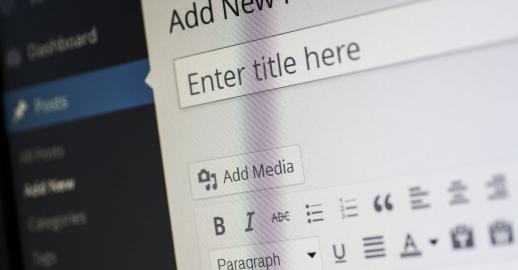What Is On-Page SEO?

4th September 2020
On-page SEO involves the improvement and optimisation of website pages to grow online traffic from search engines such as Google and Bing. This differs from off-page SEO, which covers how your results look on search engine results pages, looking at elements such as meta descriptions, featured snippets and quick answers – everything that influences how users interact with your search results.
In this blog post we’ll cover some of the basics of on-page SEO, including:
- Page titles
- Header tags
- Image alt text
- Links
- Content
Page Titles
A page title is the name of your web page as it appears at the top of a user’s browser. These often take a formulaic, structured format based on the name of the website and the title of the page in question. For example, the title for this page is:
What Is On-Page SEO? | SilverDisc Digital Marketing Agency
Every page on the SilverDisc website is set up in this style, with the page title and the website title separated with a pipe (except for the homepage, which has a slightly different format). You’ll notice that we don’t just use “SilverDisc” here – we target the keyword “digital marketing agency” to improve our SEO for this search term. This structure means our brand and the core keyword that explains what we do are present in every page title on the website.
It also means that the keyword we’re optimising that particular page for will appear early on in the page title, to reduce the risk of it being cut off in SERPs – or it should do, as it should be present in the header tags or main page headings. Let’s take a look at those next.
Header Tags
The most significant heading tag on a page is the Heading 1, or H1. Each page should have a H1 that describes the main content and concept of a page, including the primary keyword or phrase you are trying to rank for in search engines. After that, heading tags can range from H2-H6, descending in terms of importance. It’s rare that you will need all of them on a given page, so don’t worry about squeezing them in unnecessarily, but they can be a good way to organise on-page content with relevant, keyword-driven headings.
Image Alt Text
Image alt text or tags are crawled for the purpose of screen readers and accessibility options, allowing the visually impaired to understand what an image is. This presents an opportunity for on-page SEO – if this wording needs to be crawled by Google for accessibility reasons, then having keywords in the image alt text can only help in your efforts to improve page rankings.
To provide an example, consider this image:
Image

Using no alt text on the image or something basic such as “Image 1” would do very little for the user experience if they rely on screen readers. Similarly, Google would pick up very little of note in its crawls from such wording and it would offer no benefit to your SEO strategy. So how would you improve it? One example could be image alt text such as “Using A Flymo Electric Grass Trimmer In Your Garden”. This text gives a screen reader a good idea about the contents of the image, whilst also ensuring that Google picks up key terms such as the product type and brand to help with on-page SEO.
Striking a balance between using keywords in the image alt text to aid your SEO efforts whilst ensuring the text remains useful to those who really need it will be your recipe for success.
Links
Internal linking is important to help Google’s bots crawl your website. Having a clear site structure will enable bots to find pages more easily and understand the structure and hierarchy of your website. This helps greatly with usability, too.
Links could appear in menu structures, listings pages or simply within your content, and each has its benefits. As your menus usually appear on every page of your website, the links within them are duplicated across the site, which tells Google that those pages are particularly important as there are lots of links back to them. Now that you know the power of internal linking, you could look to increase links between your products, blog posts, service pages and other pages where links may naturally fit in, and use this to direct more traffic to your core pages and signal to Google that they are important pages, to help them rank higher.
You should also consider creating a sitemap in XML format and submitting it to Google Search Console to help Google’s bots crawl the site with ease.
Also consider your anchor text, which is the text that contains your links. For example, instead of “click here to view our grass trimmers”, you could consider “discover our range of Flymo grass trimmers” which covers your target keywords in the anchor text. This also helps out people using screen readers.
Content
The most important aspect of content is that it doesn’t exist purely to rank in search engines; it exists to help the user. There may be a temptation to overload your content with keywords you are trying to rank for, running the risk that the content itself may become incoherent, just to grow traffic. Sadly, this will be a fruitless effort - keyword density isn’t part of modern ranking algorithms, so using the same keywords over and over again won’t help with SEO unless they’re used with context and purpose. Focus on quality rather than quantity and improve the user experience - the rest will take care of itself.
If you’re unsure where to start with your content, always keep the user experience top of mind. For example, Moz considers questions as “SEO gold”, so working on content which answers typical question-based searches is a great place to start.
Use keyword planning tools such as Moz’s keyword planner and the Google Ads Keyword Planner, as well as search engines themselves, to discover what questions potential customers are asking. From there you can focus your content on providing them with not just an answer, but an answer as to how your product or service fulfils their need.
To summarise, here are our top tips for on-page SEO:
- Ensure your H1 heading includes your target keyword or search phrase
- Make your image alt texts descriptive whilst including your chosen keywords
- Use internal linking in menus, listing pages or content to create a clear site structure
- When linking within content, try to use keywords in anchor text rather than just “click here”
- Focus on content that enhances the user experience – don’t just overload it with keywords
If you would like help with improving your website’s SEO, including on-page SEO, we're here to help - contact SilverDisc online today.






